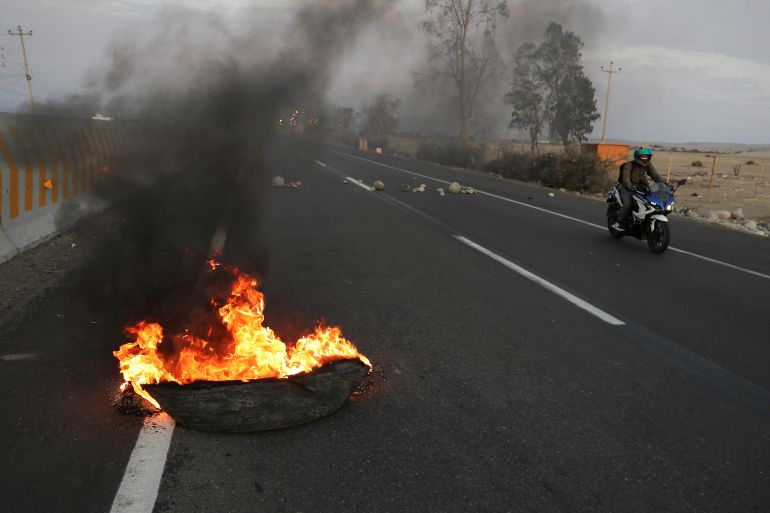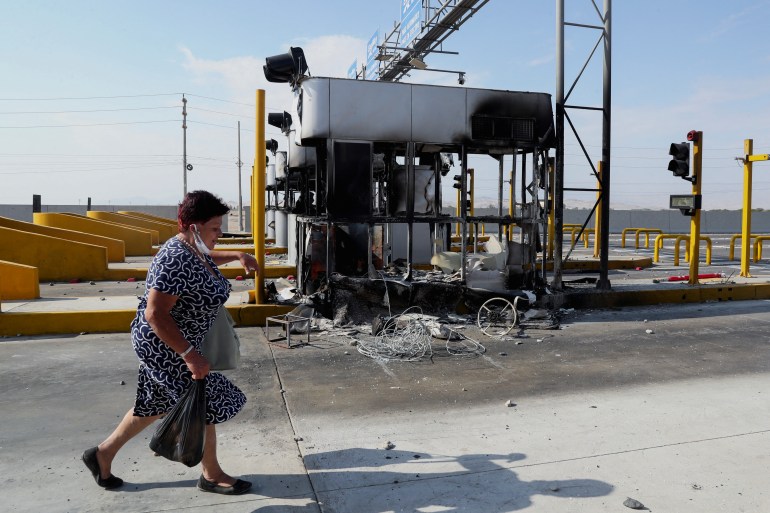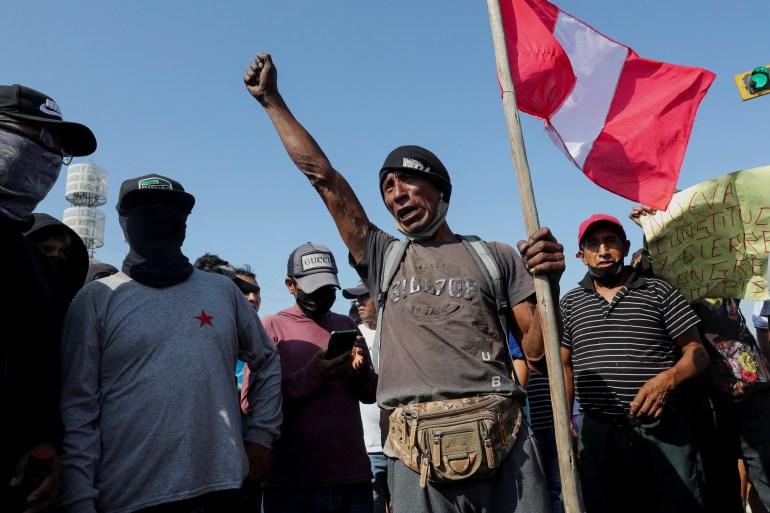Peru fuel protests: President Castillo imposes curfew in Lima
The Latin American nation has witnessed protests triggered by rising fuel and fertiliser costs in the wake of the Ukraine war.

Peruvian President Pedro Castillo has imposed a curfew in the capital Lima in his latest effort to temper a wave of protest triggered by rising fuel and fertiliser costs.
“The cabinet has agreed to declare a ban on the mobility of citizens from 2am [07:00 GMT] through 11:59pm of Tuesday, April 5 to protect the fundamental rights of all people,” Castillo said on Tuesday in an address broadcast nationwide.
Keep reading
list of 3 itemsPeru oil spill: Judge bars Repsol executives from leaving country
Peru’s president swears in fourth cabinet in six months
The move comes as demonstrations across the country continued into their second week. The government has been unable to bring prices down after the Russian invasion of Ukraine caused a spike in energy, food and fertiliser prices worldwide.
The rising fertiliser prices were triggered by Western sanctions on Russia, a major exporter of potash, ammonia, urea and other soil nutrients.
Increasingly violent
At least four people have been killed as the protests became increasingly violent, the government said.
The turmoil erupted last week with farmers and truckers blocking some main highways to Lima, leading to a sudden surge in food prices. Near the southern city of Ica, demonstrators burned toll booths and clashed with police.
“This strike isn’t happening just here, it’s all over Peru,” one protester in Ica, who declined to be identified, told Reuters news agency.

The government responded over the weekend with a proposal to forego most taxes on fuel in an attempt to lower prices, while also raising the minimum wage by about 10 percent to 1,205 soles ($332) a month.
But the General Confederation of Peruvian Workers, the country’s main trade union confederation, rejected the wage hike, stating it was insufficient, and called on its affiliates to march on Thursday.
The price of diesel, the most used fuel, was meant to drop by $0.47 a gallon (1 gallon = 1.5 litre), but several protesters said the price was unchanged in some petrol stations on Monday.

The protests represent a harsh reality for the embattled presidency of left-wing Castillo, a peasant farmer and school teacher who won the election last year with the overwhelming support of the rural poor.
But his support has quickly waned, even in rural regions, and hovers at about 25 percent nationwide. In his eight months in office, Castillo has survived two impeachment attempts and cycled through an unprecedented number of cabinet members.
Like many countries, Peru was already battling high inflation before the war. In March, inflation hit a 26-year high, largely driven by rising fuel and food prices.